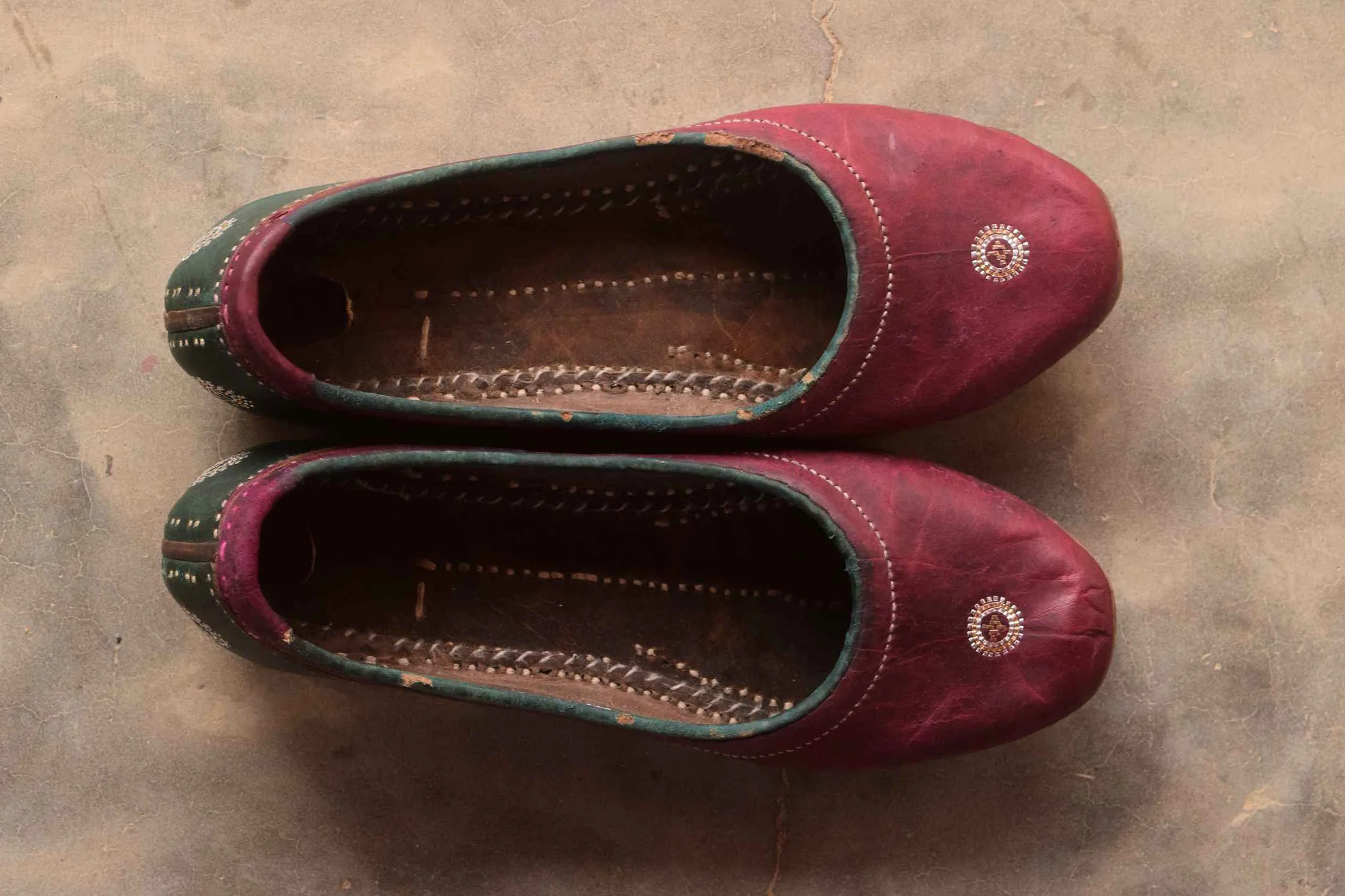
Getli Joota
Getli Jhoota were widely worn across Kachchh, but were most popular among men in the Banni region. These shoes were a dark brown or red, with minimal zari work. They were made from cow or buffalo hide which yielded thick leather well suited to endure the harsh terrain of Kachchh. Built to last, these shoes had thick soles that lasted three to four years of continuous use. Maldharis would often requested specific identifying features in their shoes. The soles had geometric cut outs which left distinct, identifying footprints behind. Other features might include a metal horse shoe attached to the heel, or pieces of leather sandwiched between the layers of sole to would make a distinct sound while walking.
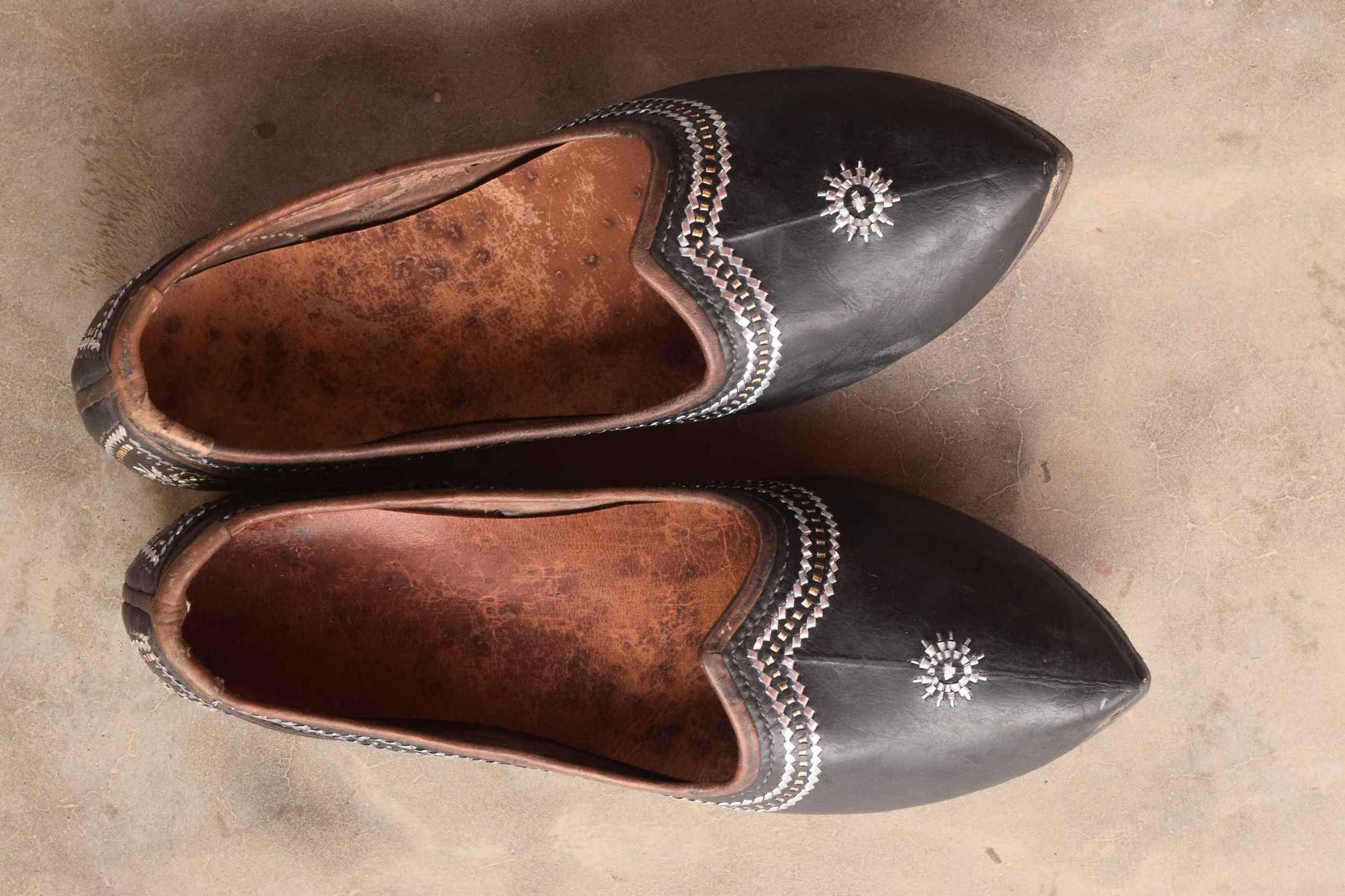
Getli Joota
Getli Jhoota were widely worn across Kachchh, but were most popular among men in the Banni region. These shoes were a dark brown or red, with minimal zari work. They were made from cow or buffalo hide which yielded thick leather well suited to endure the harsh terrain of Kachchh. Built to last, these shoes had thick soles that lasted three to four years of continuous use. Maldharis would often requested specific identifying features in their shoes. The soles had geometric cut outs which left distinct, identifying footprints behind. Other features might include a metal horse shoe attached to the heel, or pieces of leather sandwiched between the layers of sole to would make a distinct sound while walking.
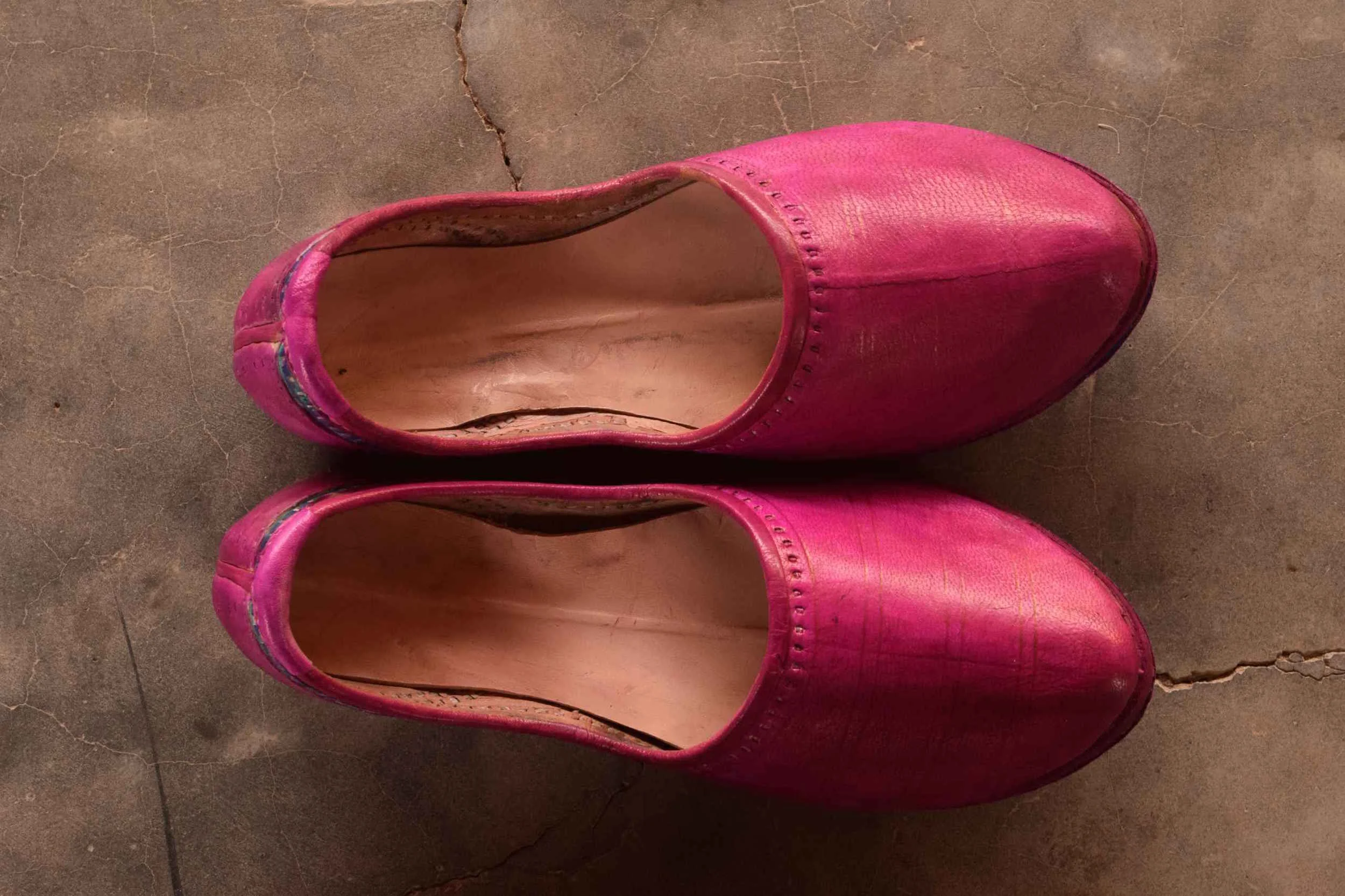
Setiyaro
These shoes were simple and lightweight, with minimal design, and were used by the elder Maldhari men in Banni. Cutout motifs on the sole were present only if the user requested them.
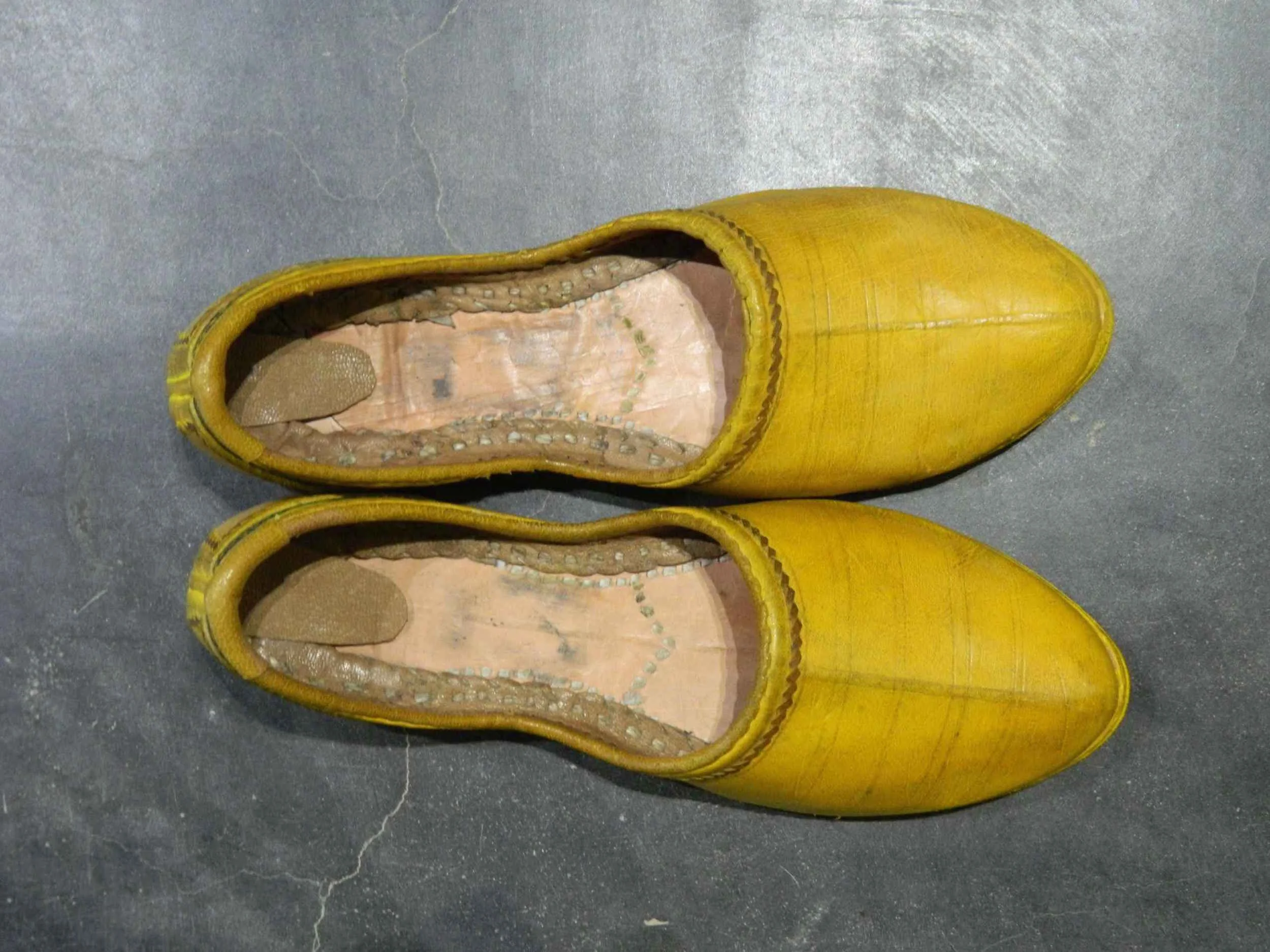
Chelar
These were daily wear shoes with thin and lightweight soles. The distinct feature of these shoes was a gap of exact two figures between the phadiyan half sole and heel.The width of the sole was kept extremely narrow to maintain lightness.
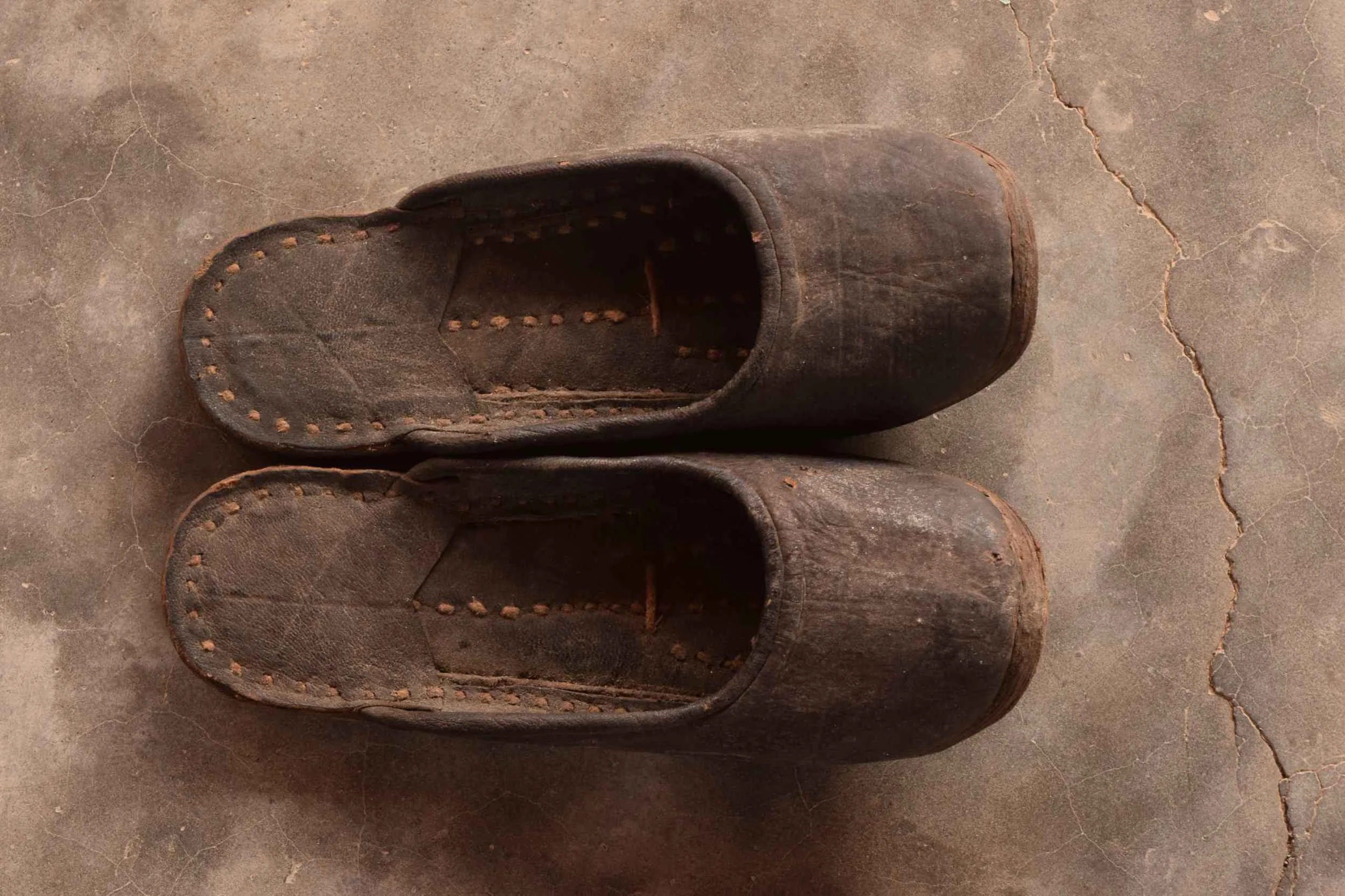
Sapaat or Chhappat
The word ‘Sapaat’ means flat. The shoes were simple and had a rough finish. They were popular among middle-aged and older women in East Kachchh. Rounded toe caps were worn mostly by the Wagadiya Rabaris (sheep and goat herders), Durbars or “upper caste” Hindus and Gadhvi (cattle herders and farmers). Slightly pointed toe-caps were popular among the Ahir (farming) women.
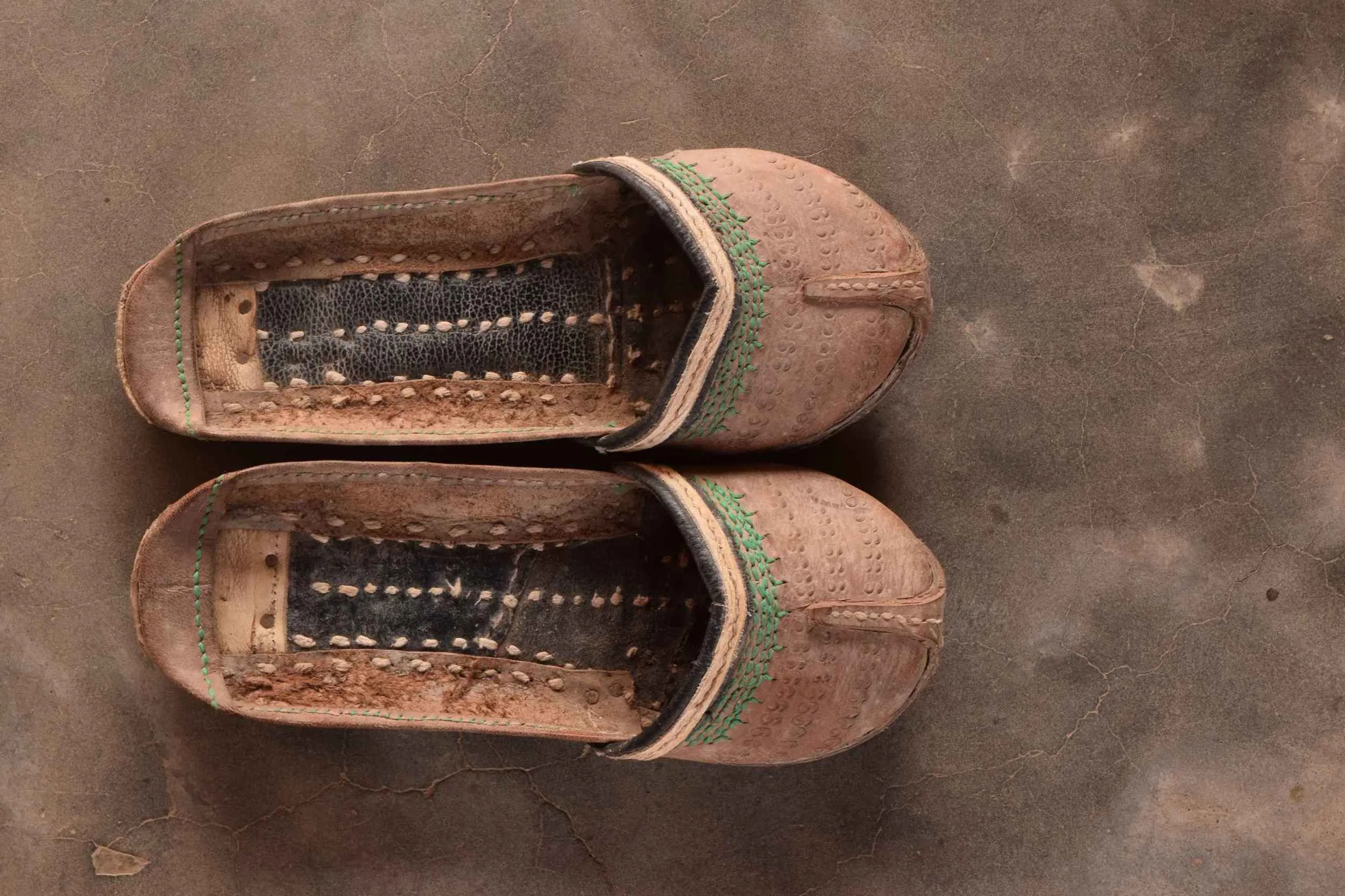
Sapaat or Chhappat
The word ‘Sapaat’ means flat. The shoes were simple and had a rough finish. They were popular among middle-aged and older women in East Kachchh. Rounded toe caps were worn mostly by the Wagadiya Rabaris (sheep and goat herders), Durbars or “upper caste” Hindus and Gadhvi (cattle herders and farmers). Slightly pointed toe-caps were popular among the Ahir (farming) women.
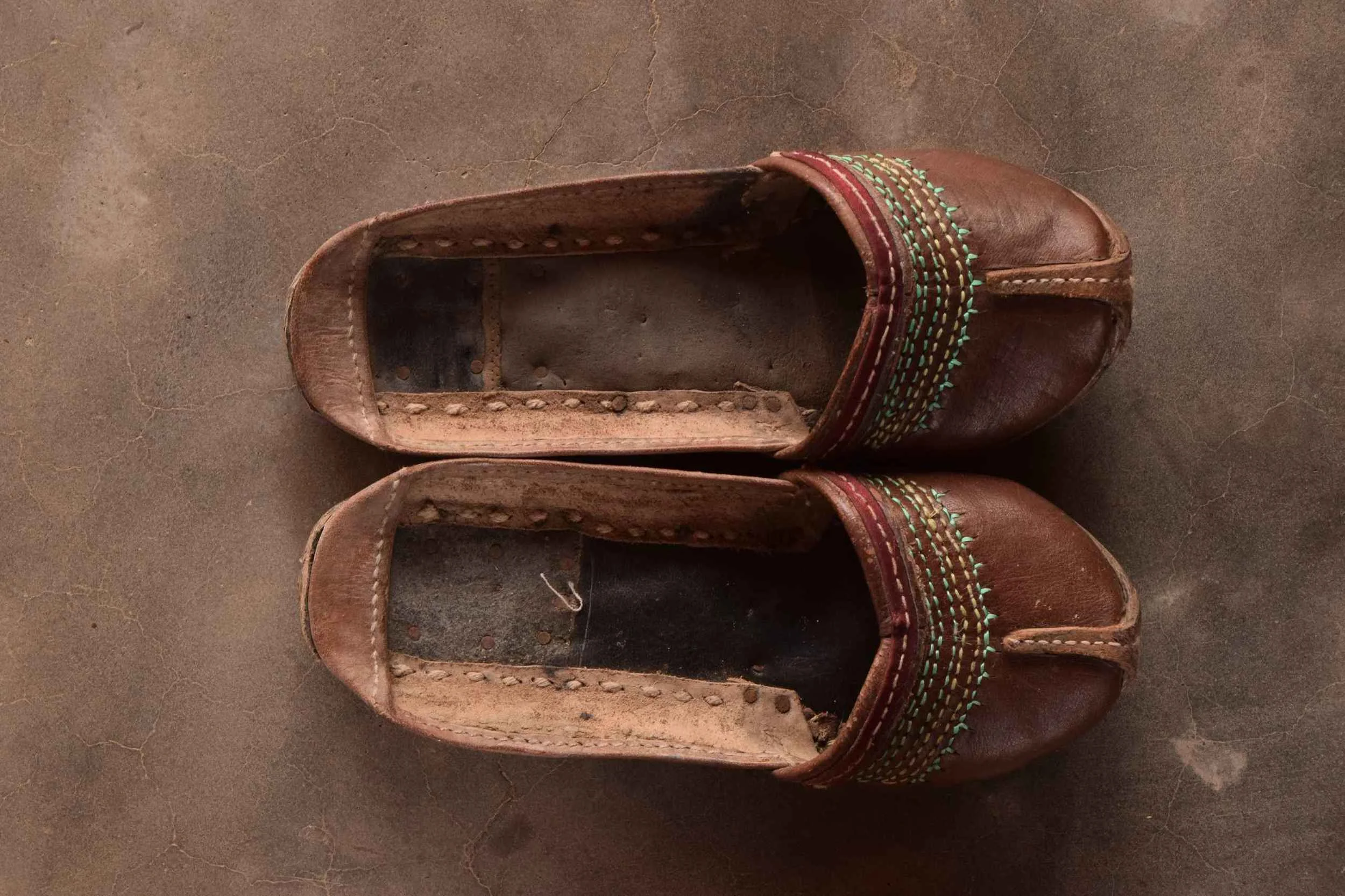
Sapaat or Chhappat
The word ‘Sapaat’ means flat. The shoes were simple and had a rough finish. They were popular among middle-aged and older women in East Kachchh. Rounded toe caps were worn mostly by the Wagadiya Rabaris (sheep and goat herders), Durbars or “upper caste” Hindus and Gadhvi (cattle herders and farmers). Slightly pointed toe-caps were popular among the Ahir (farming) women.

Sapaat
These flat shoes were worn by women across the Banni region. The pattern varied from other shoes in rest of the Kachchh with surface zari work.
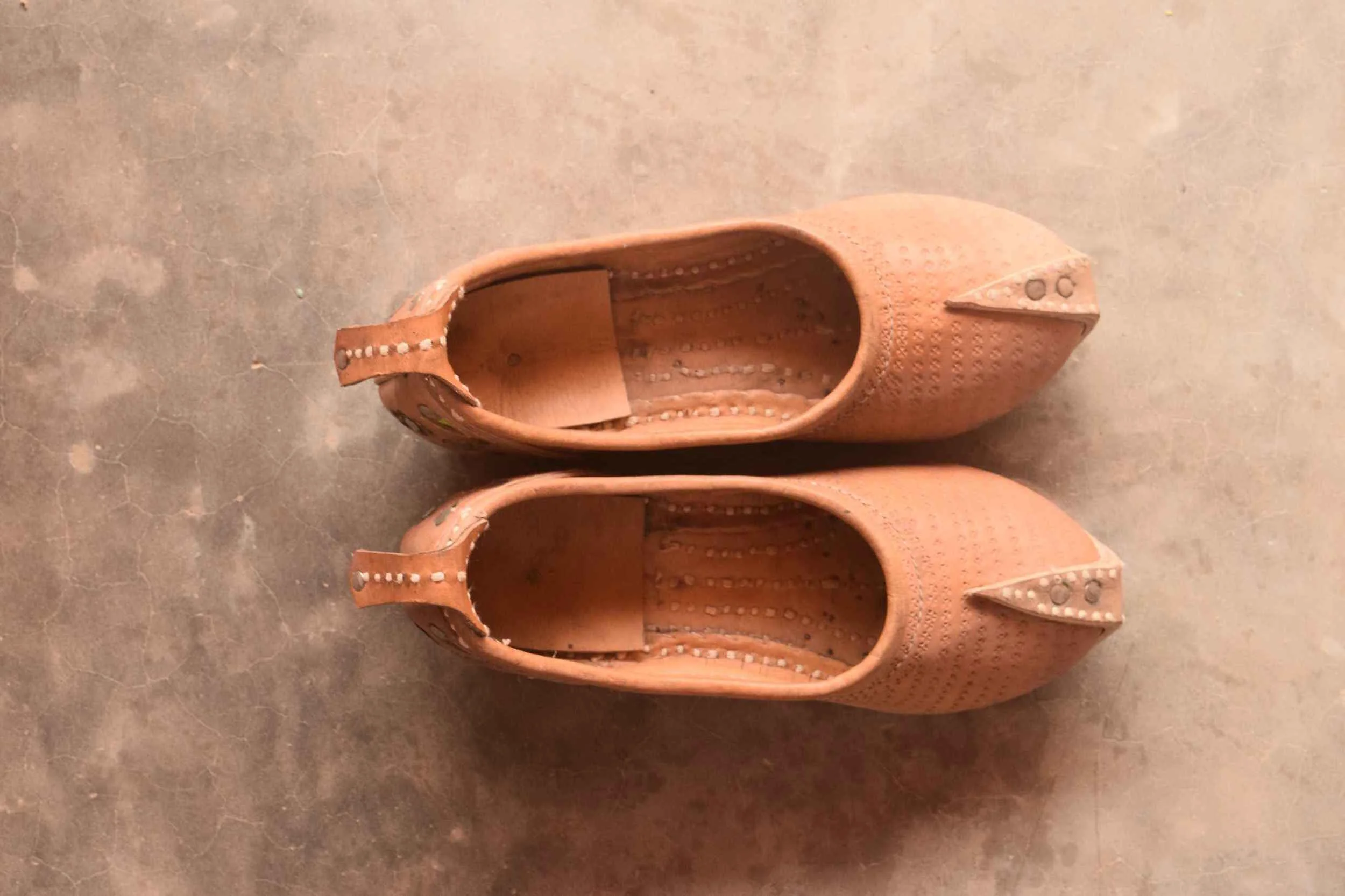
Boot
These shoes with their distinct toe-cap and back tail were worn by Wagadiya Rabaris, the sheep and goat herders in the region of Wagad. The Rabaris had a taste for the rustic and the shoes therefore were heavy with a thick outsole with nails and rivets for decoration. They valued these shoes to such an extent that they often hung them safe on their walking sticks while on the move instead of walking in them.








